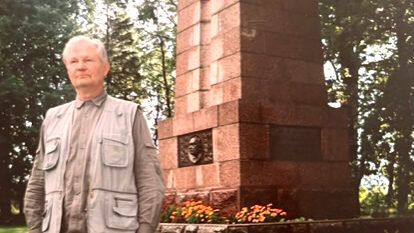March 27th of this year marks the day that the second period of the free republic, starting in August of 1991 has outlived the first period which ended in June of 1940. This translates into 7890 days of freedom both times.
Those interested have often asked how different or similar were those two eras of independence. Perhaps the most obvious similarity has been the difficulties, the growing pains of the republic's initial years as a self-governing country. Both times, the previous regime had been a radically different entity than the one Estonia itself created. Governance had to be built up from nothing. The societal and political leaders had no experience of a free and open system. In 1918, no Estonians had reached the top local levels of the Czarist regime. In 1991 Estonians had gained high positions both within the Communist Party and the government bureaucracy. Whether this was a benefit or not has been widely debated.
Two night-time actions helped to define more sharply the ideological underpinnings of Estonia as a nation-state. In 1922 the monument to Peter I was removed from Tallinn's Freedom Square. In 2007 the Soviet “Bronx Soldier” was relocated from downtown Tallinn to a military cemetery. The Peter I monument removal started on a Friday night and was finished Sunday night. It was widely demanded by citizens. Present were the city architect, city construction workers, minister of the interior, auditor general and a large crowd with volunteer workers. No public protest ensued. The 2007 monument relocation was done without any public announcement, at night and resulted in orchestrated riots with some participants bussed in from distant locations.
During both periods emigration of thousands of Estonians to countries with perceived better opportunities was the norm. In the early 1920's Estonia actually experienced immigration – from Estonians returning from Communist Russia. The population took a sharp increase. Those that left, starting in the mid-20's, weren't called traitors in pre-war Estonia and shouldn't be referred to as such now. Surely the fight for freedom not only was done in the name of democracy and basic rights, rights that would include the free choice to live anywhere in the world. In the 1920's and 1930's congresses of ex-patriots were convened in Tallinn on three separate occasions. Government ministers addressed these gatherings as fellow countrymen, who happened to reside elsewhere than in Estonia. As Estonia was invaded by the Soviet Union in 1940, the ex-patriots organized a voluble protest and formed lobby groups, especially in the USA. Similarly, refugees who had escaped in 1944 to the West maintained a concerted effort to hold the world's attention to the illegal annexation and occupation of Estonia and demanded that the country be granted the right to self-determination.
The most obvious similarity is of course the fact that Estonia is free and during both periods a close and powerful neighbour has been Communist Russia/Soviet Union. Just as before this does not cause panic, for during both periods there has been no long-term prediction of the Eastern neighbour invading. But during both eras it certainly has been the cause of a generalized unease. In 1924 the unsuccessful armed attempt to take over the Estonian government was repelled. It was known to be directly organized and financed by Moscow. In comparison, Vladimir Putin currently has not been accused of organizing a coup in Estonia. But very few observers deny that the Kremlin has clear aspirations to revive its own dominance in the near abroad. Its sense of entitlement in the area leads them to intervene in the domestic politics of Estonia and as one obvious indicator of intervention, to promote Russian language as an official language of the country.
One very fateful difference between the two free periods is the political stance on neutrality in international relations. It has been said that Estonia's pre-war insistence on adhering to a strictly non-aligned position cost it its sovereignty for 50 years. Pain-staking neutrality, declared publically numerous times was of course intended for Moscow's ears that would use any excuse to “defend” itself against a perceived aggressor. In fact that excuse was used by the Soviet Union, accusing Estonia of collusion with Nazi Germany. The fact that neutrality attracted aggression was a major motivator for Estonia to actively seek membership in the mutual defence alliance NATO. Its basic premise holds that an attack against a single member is considered to be an attack against all members. Estonian cynics reject outright the credibility of such a promise.
Both periods suffered from a severe international economic crisis. Economists point out that the pre-war depression was deeper and affected everyone more harshly. But the economic development of the country in the 1920's was easier since it did not have to start from a total absence of free-market infrastructure. Emerging from a totally controlled commercial/financial system in the 1990's took greater adjustment and new initiative.
The above are some subjective observations. The ongoing debate about which period was the most fulfilling for the individual citizen will never end in agreement. But comparisons produce insight which should lead to better choices. Theoretically.
Laas Leivat




